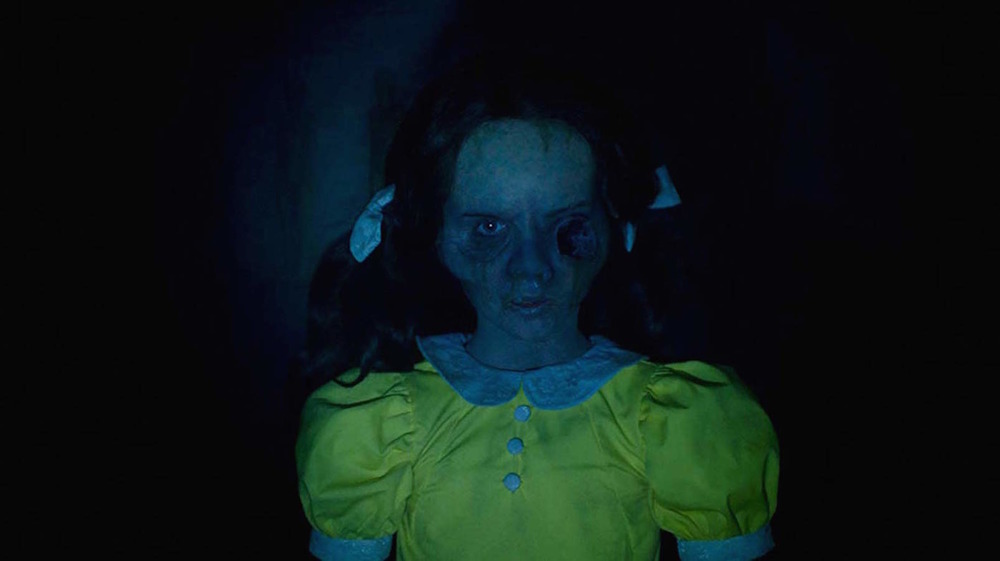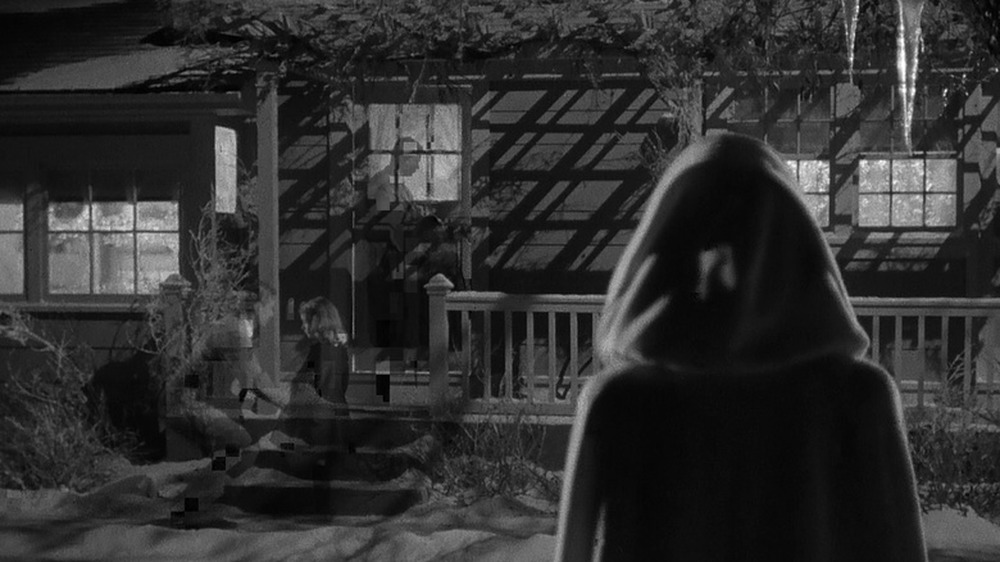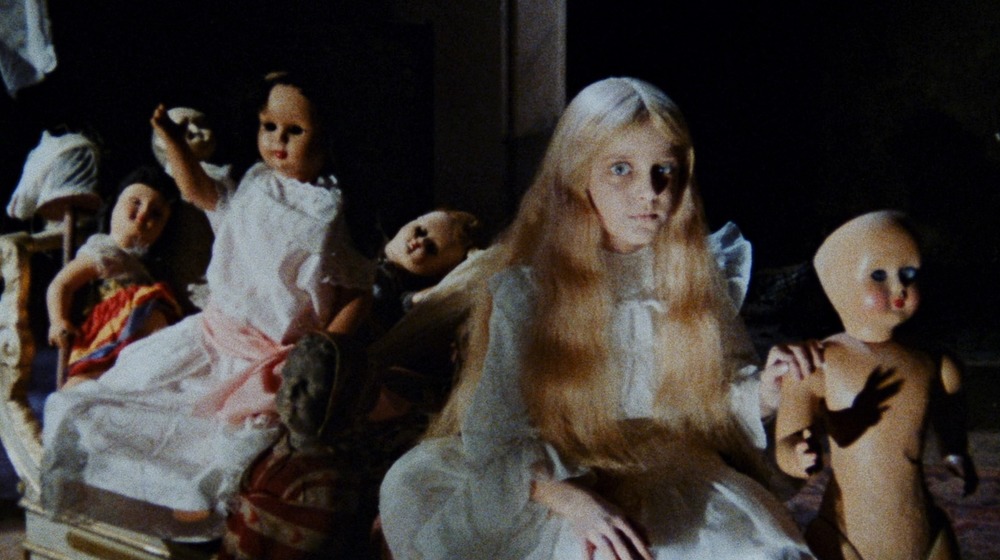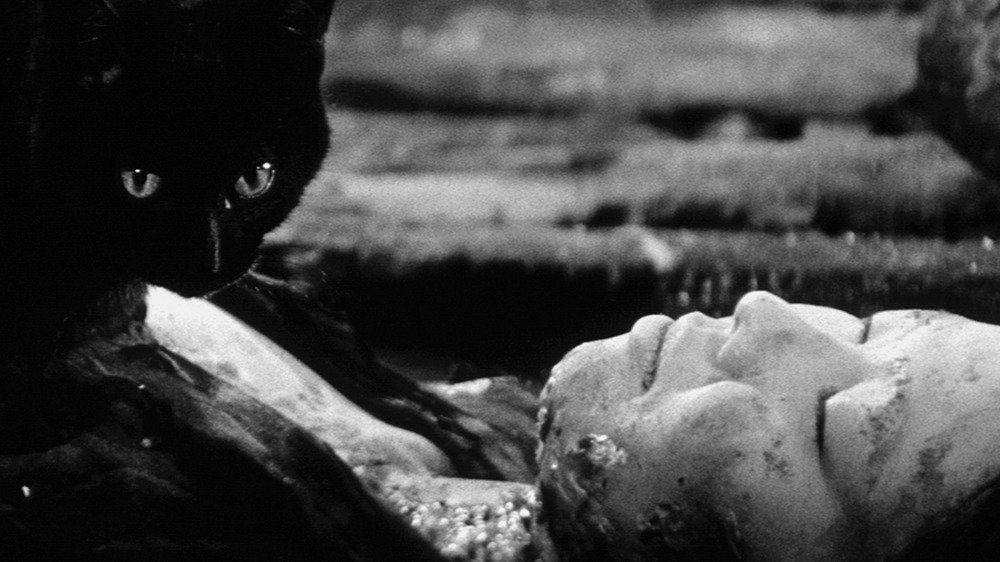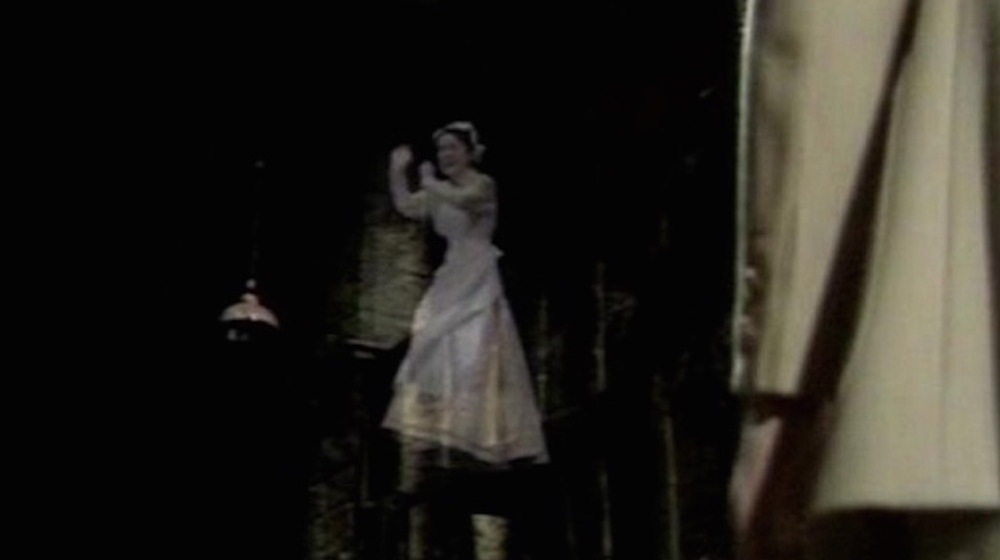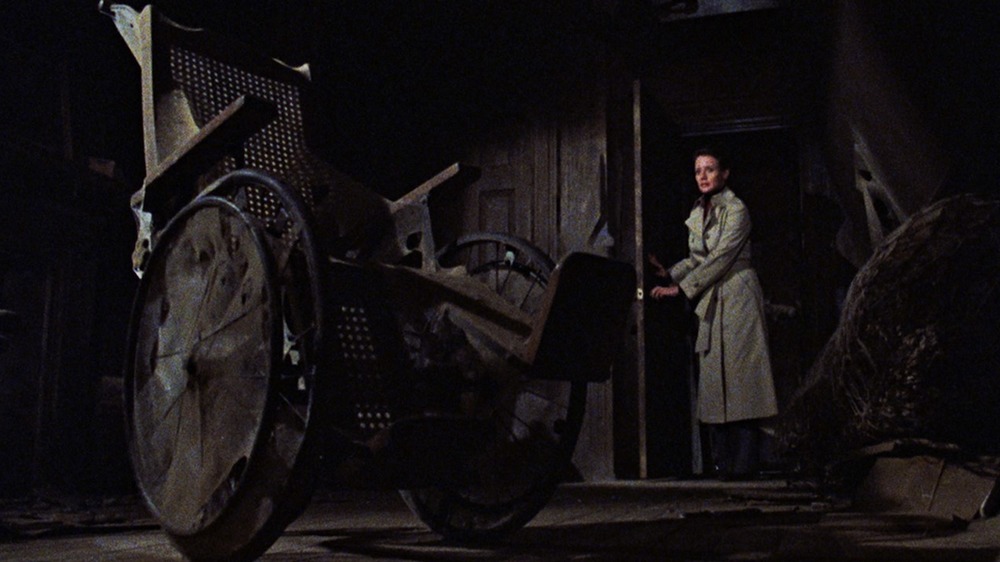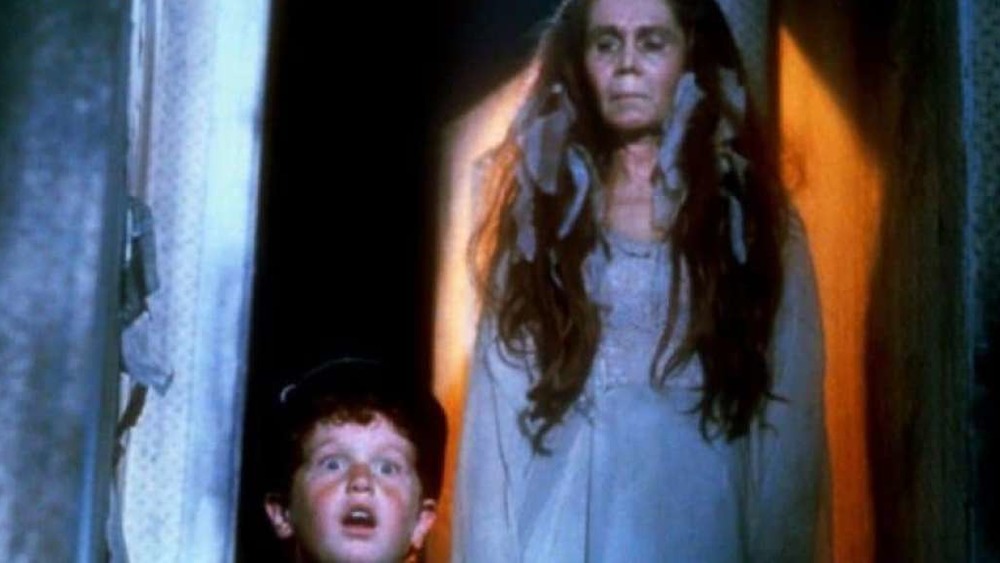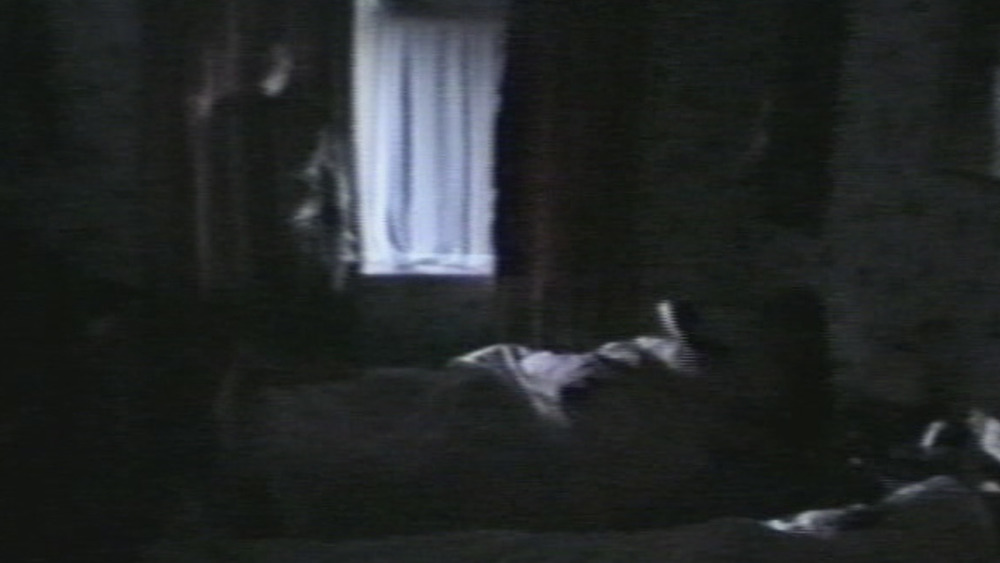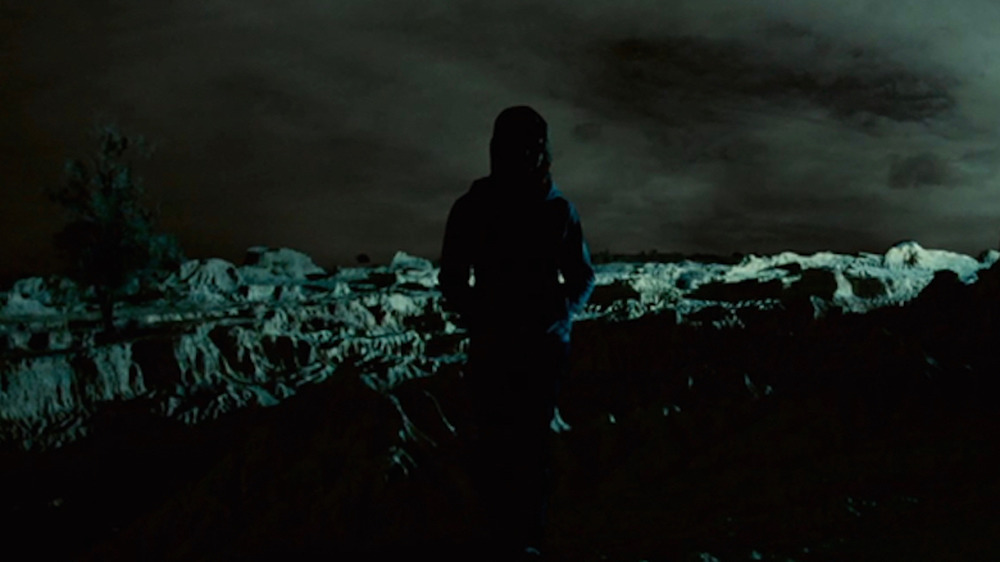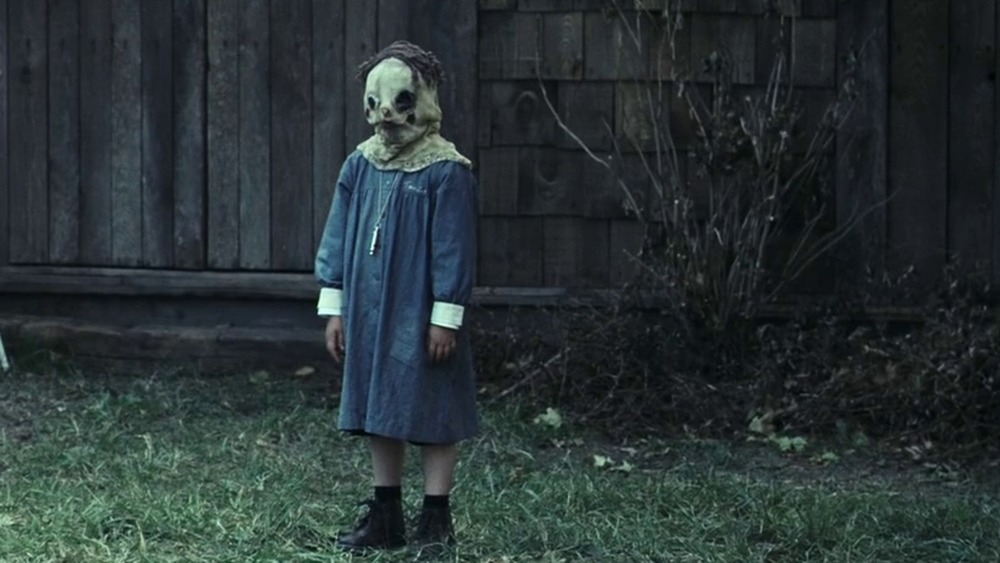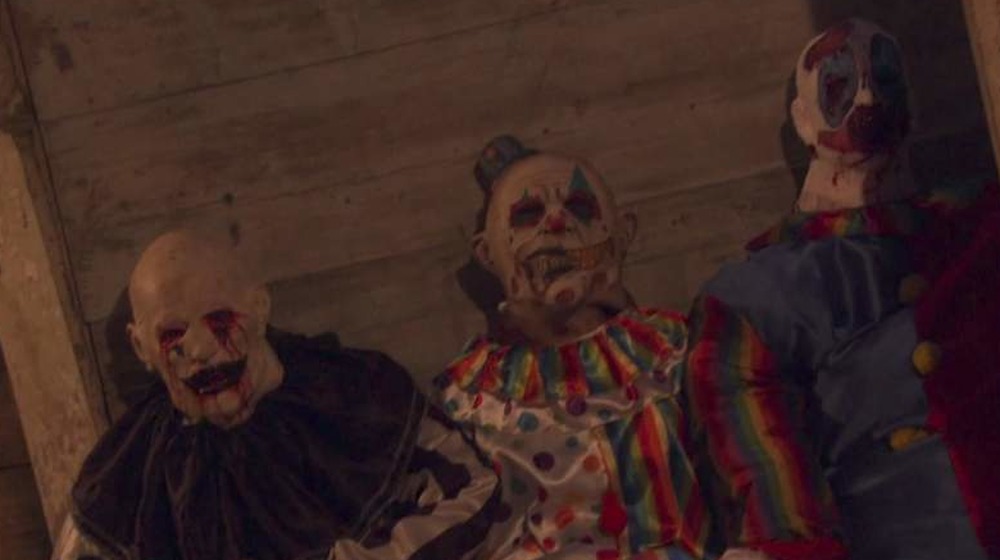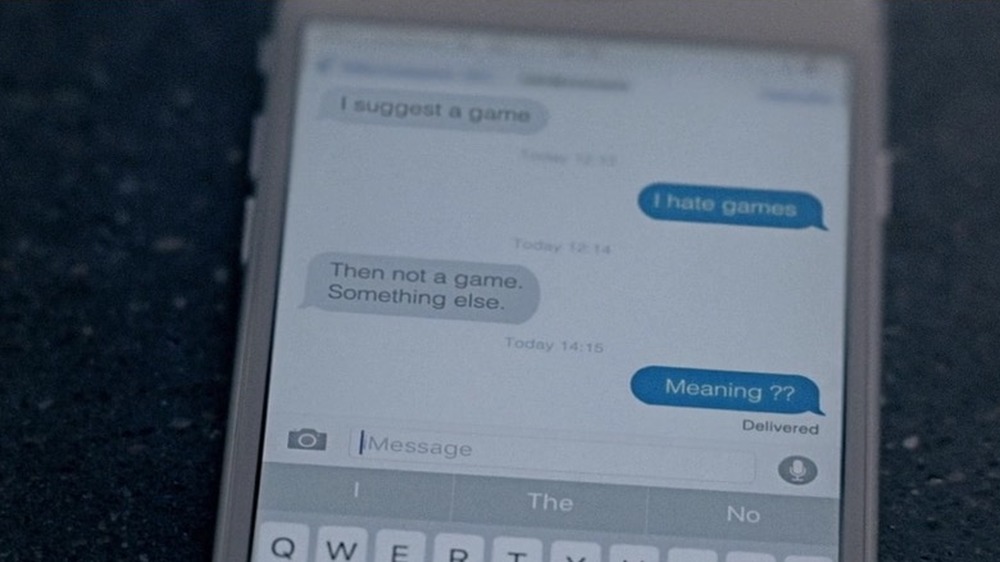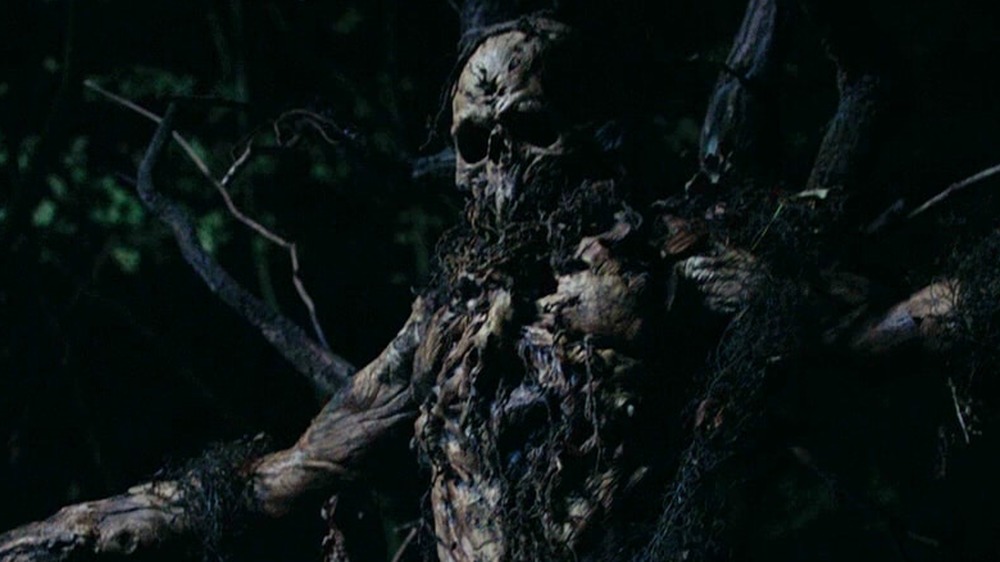Underrated Supernatural Movies You Need To Watch Now
What makes for a memorable film about the supernatural? It should be scary, of course, and take its time in revealing all the unpleasant or tragic facts about its entities before unleashing their true, terrible potential. Atmosphere is a plus, and in many cases, the more Gothic, the better, although there's much to be said about terrifying things that happen in everyday places — demons in daylight, to borrow the title of acclaimed horror author Ramsey Campbell's 1973 collection of short stories.
Curses, secret rooms, séances, and lost treasure — these are all great additions, too. But what sets apart a good ghost story from a great one is whether it made you believe in the supernatural, even if only for a moment. Every horror fan has a favorite movie about ghostly goings-on, from The Haunting to The Shining to The Sixth Sense. Following are some examples of supremely spooky excursions into the paranormal which may have flown under your personal radar, but which we now hope may haunt your dreams.
Warning — spoilers are likely to follow.
Curse of the Cat People -- a shivery sort-of-sequel
Many classic horror film fans come to 1944's The Curse of the Cat People expecting a sequel to 1942's stylish Cat People only to discover that a) the films are connected by just a few characters and plot elements, and b) it's really a gentle fantasy film about childhood. That's not to say that it doesn't have a memorable ghost: Simone Simon returns as the mysterious Irena from the first Cat People to befriend Amy, the lonely daughter of her former husband (Kent Smith, also reprising his Cat People role). Their scenes together are both spooky and bittersweet, and underscore the film's primary focus — that growing up is a scary, exciting, and confusing time for kids.
This didn't sit well with RKO Pictures, which demanded that producer Val Lewton and directors Robert Wise (Star Trek: The Motion Picture) and Gunther von Fritsch add at least some creepy elements. Lewton, who reportedly wanted to call the film Amy and Her Friend, and had based some of the plot on his own childhood in Tarrytown, New York, reluctantly agreed. Though met with a middling response upon release, Curse is considered by many critics to be one of Lewton's best films.
Kill, Baby, Kill is supernatural psychedelia
Operazione Paura – or Kill, Baby, Kill, as it's know in the States — may not be as well known as Italian horror maestro Mario Bava's other films, such as Black Sunday or Black Sabbath. But it's still a remarkable exercise in the use of atmosphere and technique to generate chills. The plot, about a remote village where death appears to be foretold by the appearance of a spectral little girl, is secondary to a barrage of surreal images that Bava employs to create a unique sense of Gothic otherworldliness. His camera climbs stairs, prowls endless corridors and through paintings, suggests the POV of a person on a swing, and fills the screen with the staring face of his ghost, a pale, staring child with a perpetually bouncing ball.
Bava then saturates the whole picture in overripe color, all of which leaves viewers feeling like they're experiencing sensory overload in a psychedelic haunted house. Naturally, Kill, Baby, Kill has left a mark on other filmmakers whose work leans towards the surreal: Federico Fellini employed a similar girl ghost for his segment of the Edgar Allan Poe anthology film Spirits of the Dead, while Martin Scorsese, David Lynch, and Dario Argento have all acknowledged or paid tribute to the film in their own work.
The cat came back in Kuroneko
A grisly story of revenge from beyond the grave, the 1968 Japanese chiller Kuroneko draws on folklore about the bakeneko ("ghost cat"), a malevolent feline spirit with a taste for harming and even killing humans. Here, it's a black cat that appears in the ruins of a tragic scene — rogue samurai have slaughtered a mother and daughter and burned down their home — before the victims reappear as ghostly figures who lure and then take brutal revenge on their killers.
That alone is enough to raise some shivers, but director Kaneto Shindo — who in 1964 directed Onibaba, another frightening supernatural story starring a pair of lethal women — adds a sense of terrible, tragic fate when a samurai is dispatched to deal with the ghosts, only to discover his personal connection to both of them. Though largely unknown to English-language viewers until a theatrical release by Janus Films in 2010, Kuroneko is an important link in the foundation of Japanese horror, with an influence that can be traced to the vengeful ghosts in the Ring and Grudge series.
The Stone Tape: '70s UK TV that terrifies
Ghost stories have long enjoyed an appreciative showcase on British television, which has produced excellent supernatural-themed small screen efforts like the long-running Ghost Story for Christmas films. While many UK TV ghost stories take place in the Victorian era, 1972's The Stone Tape is set firmly in the present day, and envisions a clash between modern technology and a malignant, centuries-old entity.
Nigel Kneale, who penned the seminal 1953 TV production of the sci-fi shocker The Quatermass Experiment, also wrote the Stone Tape script, which concerned a research team for a recording company which discovers their new facility — an old Victorian mansion — houses paranormal goings-on that can only be perceived by certain people. When it's suggested that the phenomena — which appears to show a woman's murder — has somehow been stored in and then "played back" by the house itself, the ruthless head of the team proposes using their equipment to control the phenomena. His plan appears to work — until it doesn't, which proves spectacularly scary, even with the program's lo-fi visual effects and shot-on-video look. Aired on Christmas Day in 1972, The Stone Tape is not only acknowledged as one of the best TV ghost stories, but also lent its name to the theory of residual haunting, which suggests that the thoughts, emotions, and energy of a past event can be "recorded" by a material object.
The Changeling is based on an (alleged) real-life ghost
An alleged real-life haunting inspired the spine-tingling Gothic terrors of The Changeling, a sleeper upon its release in 1980 that has since become a well-regarded title among fans of supernatural cinema. Playwright and composer Russell Hunter, who was credited with providing the film's story, claimed that he experienced increasingly strange supernatural phenomena while living in a mansion in Denver; through the discovery of a hidden journal (and a séance), Hunter allegedly learned that the house's former occupants had adopted a boy to pose as their recently deceased son in order to keep the family's inheritance from falling into the wrong hands.
Subsequent research has cast doubt on many of Hunter's claims, but it certainly made for a spooky story. Many of the events he claimed to have experienced, from mysterious noises to objects moved by unseen hands to the séance itself, are reproduced in the film. Director Peter Medak aims for subtlety over shock value — a child's red rubber ball rolling down a staircase is exceptionally creepy — although the finale, in which the truth about the "changeling" is revealed, lands a punch that lingers long after the credits.
The Lady in White is just dying to meet you
Spectral women in white turn up in the folklore and superstitions of countries around the world, as well as several movies and television series, most notably the pilot for Supernatural. For his 1988 film Lady in White, writer-director Frank LaLoggia drew on stories from his childhood home in Rochester, New York, where a ghostly figure known as the White Lady wandered one of the city's parks, reportedly looking for her murdered daughter. LaLoggia's Lady in White is connected to a series of child murders that the film's protagonist (Lukas Haas) learns about from one of its victims, a ten-year-old girl whose ghost re-enacts her harrowing murder each night.
LaLoggia's film covers a lot of ground — there's a great deal of small-town nostalgia and introspection, as well as broad humor from Haas's big Italian family — but the supernatural elements, along with the child murder storyline, have an eeriness that transcends the film's limitations with considerable help from Oscar-winning cinematographer Russell Carpenter (Titanic).
Ghostwatch gripped a nation in panic
On Halloween night in 1992, UK viewers who tuned into the BBC anthology series Screen One were treated to an episode titled Ghostwatch, which depicted a live TV investigation into an alleged haunting (based on the Enfield Poltergeist, which also inspired The Conjuring 2). Though credits for writer Stephen Volk were clearly shown, the episode's shot-on-video documentary format, as well as participation by several real-life TV presenters (all playing themselves), led many to believe that what they were watching was real. By the time Ghostwatch reached its conclusion — in which the house's monstrous entity appears to invade the broadcast studio — a panic on par with Orson Welles' War of the Worlds hoax had erupted across England.
The BBC's phone lines were swamped by calls from some 30,000 viewers, many expressing outrage or complete terror, and the program was blamed for the suicide death of a teenager. Complaints from the public and British press led to an apology from the BBC, which pulled Ghostwatch from circulation for the next decade. Since then, the episode has been cited as a forerunner of the found-footage horror genre; it's also transcended its notoriety and become a cult favorite, with viewers joining members of the original cast and production team on social media to shiver and quake through annual rebroadcasts.
Lake Mungo: part terror, part tragedy
The emotional pain of a sudden or mysterious death can spur friends and loved ones to look closely at the deceased's past to see if there are any clues that might provide answers or closure. But what happens if that search turns up disturbing or even frightening information? That's the premise of the diabolically clever 2008 Australian supernatural thriller Lake Mungo, which suggests that hidden facts should sometimes stay that way.
Writer-director Joel Anderson perfectly replicates a documentary format for his story of a family that, left unmoored by the drowning death of teenaged Alice (Talia Zucker), believes that her spirit has returned to their home. As Anderson's faux doc reveals, Alice's brother is behind the haunting, but on closer examination of his recorded "sightings," he discovers some terrible secrets about his sister. To detail the family's deeper search into Alice's fate would give away the creepiest element of Lake Mungo, but suffice it to say that the final reveal satisfies as both ghost story and dramatic tragedy.
Tomas wants to be your friend in The Orphanage
Here's an irrefutable horror film fact: ghosts are scary, but ghost kids are a whole new and different level of terror. Case in point: Samara from The Ring, the Grady Twins in The Shining, and Tomas, the paranormal half-pint at the haunted heart of the Spanish supernatural creepshow The Orphanage. It's not enough that Tomas can only be seen by little Simon (Roger Princep), or that he knows terrible secrets, like when Simon is going to die. No, Tomas ups the ante by appearing with a sack mask over his head, and the reason for that mask, as well as what happened to Tomas because of it, are just two of the many jolts awaiting visitors to The Orphanage.
The feature directorial debut of J.A. Bayona (Jurassic Park: Fallen Kingdom), the film carries the influence of its co-producer, Guillermo del Toro, whose appreciation for Gothic supernatural horror (see Crimson Peak) can be felt in the film's fairy tale-like structure and mixture of innocence and dread. Del Toro has planned an American remake of the film for years, but the project has yet to take root.
Hauntings get real in Hell House LLC
What happens when you open a Halloween attraction in an actual haunted house? Nothing good (no surprise there), but also plenty of terror, as the 2015 indie Hell House LLC shows us. Director Stephen Cognetti launches his film as a faux documentary investigating multiple deaths that occurred on the opening night of a haunted house attraction in upstate New York. A documentary crew unearths fragments of information — was the hotel the site of a former cult? — before the sole survivor of the massacre comes forward with footage from the days leading up to the tragedy.
From there, Hell House shifts into found footage gear, with the proprietors of the haunted house setting up their attraction, only to find that they aren't the sole occupants of the hotel. A solid primer on how to wring maximum scares from a microbudget production, Hell House LLC has since become something of a franchise, with sequels that delve further into the hotel's horrid past arriving in 2018 and 2019.
Personal Shopper is a stylish supernatural exercise
Two mystery worlds — the lives of the rich and famous, and the afterlives of the unquiet dead — collide in writer-director Olivier Assayas' elegant and icily eerie 2016 film Personal Shopper. Kristen Stewart is top billed as an American working in Paris for a high-maintenance supermodel while also grieving the death of her twin brother. Stewart, who considers herself a medium, begins to receive texts from an unknown caller who seems to know everything about her. Is it her brother? Or is there someone or something else that's trying to make contact with her, and who appears to have far more malevolent plans than simple communication with her?
Personal Shopper is by no means a traditional supernatural thriller — the shocks unfold quietly, and the focus is less on revealing the identity behind the texts than on maintaining an atmosphere of mystery. But anyone who's ever felt ice run down their spine after hearing a strange noise in an empty hotel room or receiving a late night call from an anonymous number will find much to shiver over in Personal Shopper.
Ghost Stories: three stories, big scares
Jeremy Dyson of The League of Gentlemen co-wrote and co-directed this very effective anthology film (of sorts) about a professional debunker facing three seemingly real cases of supernatural activity. Dyson's co-writer/co-director, Andy Nyman, plays the skeptic, who is called by his boyhood hero, a paranormal sleuth long thought to be missing, to look into the three cases. They concern the ghost of a young girl in an abandoned asylum, an alleged encounter with Satan, and a banker (Martin Freeman, The Hobbit) targeted by a poltergeist.
What sets Ghost Stories – which began as a stage production by Dyson and Nyman — apart from other horror anthologies is that the stories are less individual vignettes than carefully crafted clues to a larger and awful truth about Nyman's character. As a tribute to classic horror anthology films — especially the British variety, like the '70s Tales from the Crypt – and as a fresh take on supernatural horror, Ghost Stories is a satisfying shockfest from start to finish.
